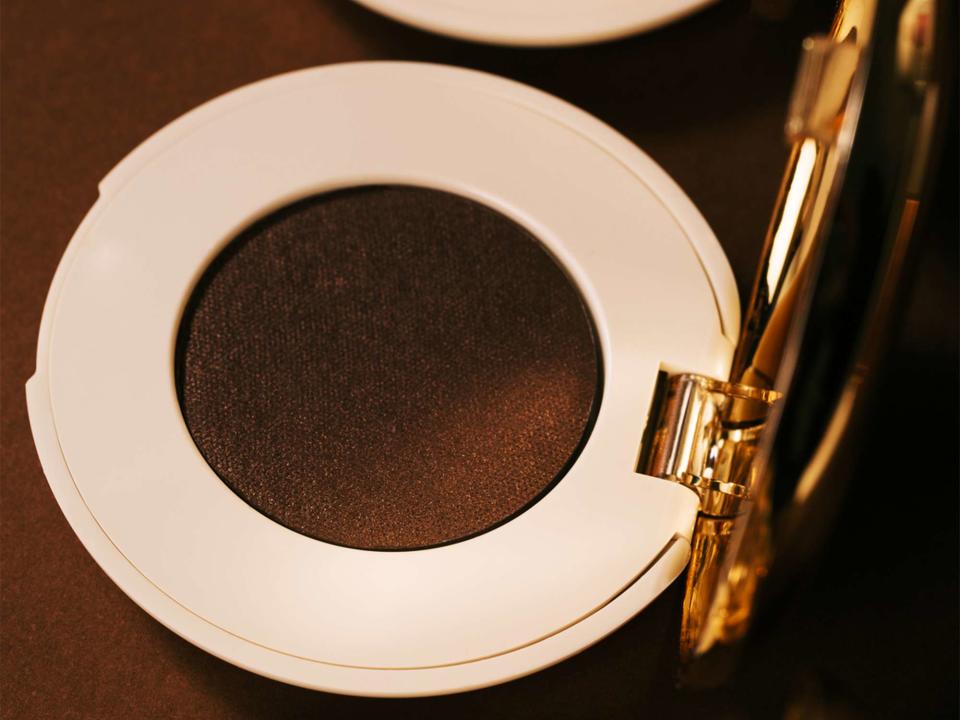Is The Beauty Community On TikTok Entering Its “De-Influencing” Era?
Will this new era stick? Only time will tell.

Stocksy
What do the Dyson Airwrap, Dior Lip Glow Oil, and the Rare Beauty Soft Pinch Liquid Blush all have in common? They're all beauty products that have gone viral on TikTok to the point where they've sold out at numerous retailers like Sephora and ULTA. And, like many TikTok users, I've been repeatedly guilty of feeding into the frenzy of these influencer-approved products. I've purchased and tried buzzy products like the Pixi Beauty On-the-Glow Blush and the Glow Recipe Watermelon Glow Niacinamide Dew Drops.
It's no secret that over the last few years, TikTok has replaced platforms like YouTube, becoming the go-to spot for beauty influencers to recommend products. But has the world of beauty influencing gone too far? Enter: TikTok's "de-influencing" era.
What Is De-Influencing?
On my TikTok For You Page the past week, instead of being swarmed with endless beauty recommendations and drugstore dupes for viral favorites, I've been shockingly greeted with the total opposite: creators urging me not to buy certain hyped-up beauty products, also known as "de-influencing." The hashtag #deinfluencing has quickly amassed over 96 million views on TikTok as creators begged their followers to save their coin on often expensive, overhyped, and unnecessary products.
For example, creator @alyssastephanie encouraged her followers not to buy Olaplex No. 4 and No. 5, saying, "This is a cult product that I hate." TikTok user @katiehub.org snubbed the viral Dior Lip Glow Oil, telling her followers, "Just because you put pretty packaging over garbage doesn't mean it's not still garbage."
TikTok creators have even gone as far as to praise the de-influencing trend, saying they're "loving" it. User @eliseeatsplants said, "Any influencer you're watching is either getting paid for talking about a product or is getting it for free." Still, it's also important to remember that preferences are subjective. Ultimately, what you like or dislike (or what works for your hair, skin, or body) is solely up to you—no matter who screams yay or nay.
Why Is The De-Influencing Trend Happening Now?
While the de-influencing trend doesn't have clear origins, it arguably catapulted into popularity after TikTok beauty influencer Mikayla Nogueira received backlash for allegedly inauthentically promoting the L'Oreal Paris Telescopic Lift Mascara while seemingly wearing fake eyelashes. In the comments section of the original video, one commenter even asked Noguiera if she was wearing false eyelashes, to which she responded, "No, just three to four coats and my tight liner." Noguiera also replied to another commenter who mentioned the falsies controversy, saying, "Nooo, OMG, L'Oreal would never allow that in a partnered post!!! But y'all are proving my point."
But Nogueira isn't the only beauty influencer under recent fire for ingenuine branded content. Tarte's recent multimillion-dollar Dubai influencer trip received much backlash from the beauty community. Popular influencers like Alix Earle, Meredith Duxbury, and Monet McMichael were accused of being "tone-deaf" for going on an expensive influencer trip and promoting Tarte products to their followers in the middle of a lurking recession.
Ultimately, what you like or dislike (or what works for your hair, skin, or body) is solely up to you—no matter who screams yay or nay.
It's important to note that, unlike other social media apps like Instagram and YouTube, TikTok is popularly viewed as an app for creators to be authentic, unfiltered, and honest. A 2021 study by TikTok and Nielsen found that 64% of over 8,000 global TikTok creators felt they could be their "real selves" on the app. The study also found that creators believed that advertising on TikTok felt more authentic, honest, genuine, and trustworthy than other apps. But is this true? As a newer app, TikTok has only recently leaned more into monetization, especially as brands and companies have hopped on the bandwagon.
Still, the app and its creators rely on branded content and advertising to make money. And the world of beauty influencing is—and always has been, since beauty YouTube—incredibly lucrative (after all, big influencers like Earle make upwards of 70 thousand bucks per branded partnership post on TikTok).
With this in mind, it makes sense why inauthentic branded content and advertising like Nogueira's lash fiasco upset the larger beauty community—especially considering so many TikTok users view the app as a haven of authenticity and truth. That combined with Gen Z's exhaustion from over-consumption and talks of a recession? Well, it makes sense that the beauty community on TikTok may be entering its de-influencing era.
Will This New Era Stick?
The real question: Will this new era stick? Only time will tell. For starters, beauty trend cycles, aesthetics, and eras on TikTok change as quickly as we change clothes. The controversial clean girl aesthetic has now been replaced by the vanilla girl aesthetic, and Hailey Bieber's glazed chrome nails' long-lost twin is the lip gloss manicure. As soon as one trend starts, it's forgotten, and another one begins. The de-influencing trend will probably be no different.
Another reason the de-influencing trend likely won't stick is because of the monetary nature of TikTok and the world of beauty influencing. Beauty influencers (especially those who work in that field full-time) largely depend on brand partnerships to earn a living. While smaller creators who aren't reliant on TikTok for their primary income may keep on de-influencing, it's unlikely that big influencers will follow suit, especially if they want to stay on beauty brands' good sides.
However, even if short-lived, TikTok's de-influencing era is evidence of a cry for influencer authenticity and transparency. And whether you're using your platform to sell beauty products in abundance or not, it's a cry worth listening to.
Up Next:Skin Flooding Is TikTok's Buzzy New Trend For a Quenched Complexion

